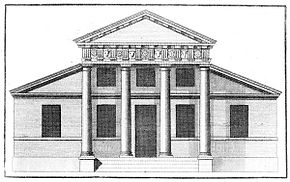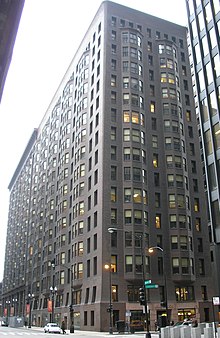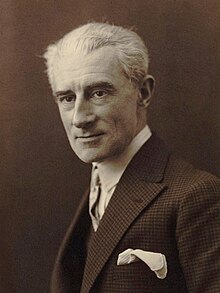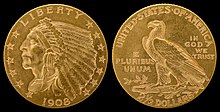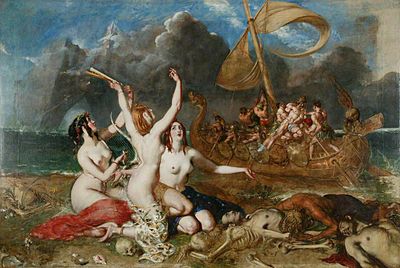Portal:The arts
T H E A R T S P O R T A L
The arts or creative arts are a wide range of human practices of creative expression, storytelling, and cultural participation. They encompass multiple diverse and plural modes of thinking, doing, and being, in an extremely broad range of media. Both dynamic and a characteristically constant feature of human life, they have developed into innovative, stylized, and sometimes intricate forms. This is often achieved through sustained and deliberate study, training, and/or theorizing within a particular tradition, across generations, and even between civilizations. The arts are a vehicle through which human beings cultivate distinct social, cultural, and individual identities while transmitting values, impressions, judgements, ideas, visions, spiritual meanings, patterns of life, and experiences across time and space.
Prominent examples of the arts include:
- visual arts (including architecture, ceramics, drawing, filmmaking, painting, photography, and sculpting)
- literary arts (including fiction, drama, poetry, and prose)
- performing arts (including dance, music, and theatre)
They can employ skill and imagination to produce objects and performances, convey insights and experiences, and construct new environments and spaces.
The arts can refer to common, popular, or everyday practices as well as more sophisticated, systematic, or institutionalized ones. They can be discrete and self-contained or combine and interweave with other art forms, such as the combination of artwork with the written word in comics. They can also develop or contribute to some particular aspect of a more complex art form, as in cinematography. By definition, the arts themselves are open to being continually redefined. The practice of modern art, for example, is a testament to the shifting boundaries, improvisation and experimentation, reflexive nature, and self-criticism or questioning that art and its conditions of production, reception, and possibility can undergo.
As both a means of developing capacities of attention and sensitivity and as ends in themselves, the arts can simultaneously be a form of response to the world and a way that our responses and what we deem worthwhile goals or pursuits are transformed. From prehistoric cave paintings to ancient and contemporary forms of ritual to modern-day films, art has served to register, embody, and preserve our ever-shifting relationships to each other and to the world. (Full article...)
Featured articles -
Featured picture
Did you know...
- ... that the Chase Promenade (pictured) hosted a month long Museum of Modern Ice exhibit of abstract art on a 95 by 12 feet (29.0 by 3.7 m) wall of ice called Paintings Below Zero?
- ... that Christopher Smart's Hymns for the Amusement of Children were finished by the author while in debtors prison and that he died before he ever received notice that the work was a success?
- ... that critical reception to Hogarth's Sigismunda mourning over the Heart of Guiscardo was so harsh the artist was forced to remove the painting from exhibition?
In this month
- 5 May 1726 – Handel's opera Alessandro premieres at the King's Theatre in London with Italian castrato singer Senesino in the title role
- 12 May 1926 – Dmitri Shostakovich's Symphony No. 1, which he composed at the age of 19 while a student at Leningrad Conservatory, receives its first performance
- 22 May 1844 – Impressionst painter and printmaker Mary Cassatt (self-portrait pictured) is born in Allegheny, Pennsylvania
- 26 May 1897 – Bram Stoker's novel Dracula, which later became the subject of numerous theatrical, film and television interpretations, is published by Constable & Co.
- 29 May 1913 – Igor Stravinsky's ballet The Rite of Spring premieres in Paris and causes a riot in the audience between supporters and opponents of the work
News
- August 5: DaBaby Levitating remix losing US radio audiences after the rapper's comments on HIV/AIDS
- June 11: Taylor Swift's Evermore records biggest sales week of the year as it returns to No 1 on album chart
- May 27: Olivia Rodrigo's song good 4 u debuts at No 1 on US Billboard Hot 100 chart
- May 25: 'Rock and roll never dies': Italy wins Eurovision after 30 years
- February 10: Disney to shut down Blue Sky Studios, animation studio behind 'Ice Age'
Featured biography
Charles Holden (1875–1960) was an English architect better known for designing many London Underground stations during the 1920s and 1930s, for Bristol Central Library, the Underground Electric Railways Company of London's headquarters at 55 Broadway and for the University of London's Senate House. He also created many war cemeteries in Belgium and northern France for the Imperial War Graves Commission. His architecture is widely viewed and appreciated. He won the Royal Institute of British Architects' Royal Gold Medal for architecture in 1936 and was appointed a Royal Designer for Industry in 1943. His station designs for London Underground became the corporation's standard design influencing designs by all architects working for the organisation in the 1930s. Many of his buildings have been granted listed building status, protecting them from unapproved alteration. Due to his modesty and belief in the team effort of his fellow architects, he declined twice the offer of a knighthood. (Full article...)
Featured audio
Selected quote
Categories
WikiProjects
Parent project
Descendant projects
Related portals
Things you can do
- Check the recent changes page for improvements, other changes, and vandalism to these articles
- Article requests: Requests articles (arts and entertainment)
- Deletion discussions: Listed at Wikipedia:WikiProject Deletion sorting/Arts
- Expand: check Visual arts stubs to expand
- Notability: Articles with notability concerns, listed at WikiProject Notability
- Requested pictures: Arts topics, requested pictures





